XDR Development Introduction
In Cisco XDR, we can make integrations around dashboard tiles, incidents, investigations (enrichment), automation workflows, and assets.
This document will teach you about each of these components, the types of integrations available for each, and how to get started.
Let's talk about each component.
Dashboard Tiles
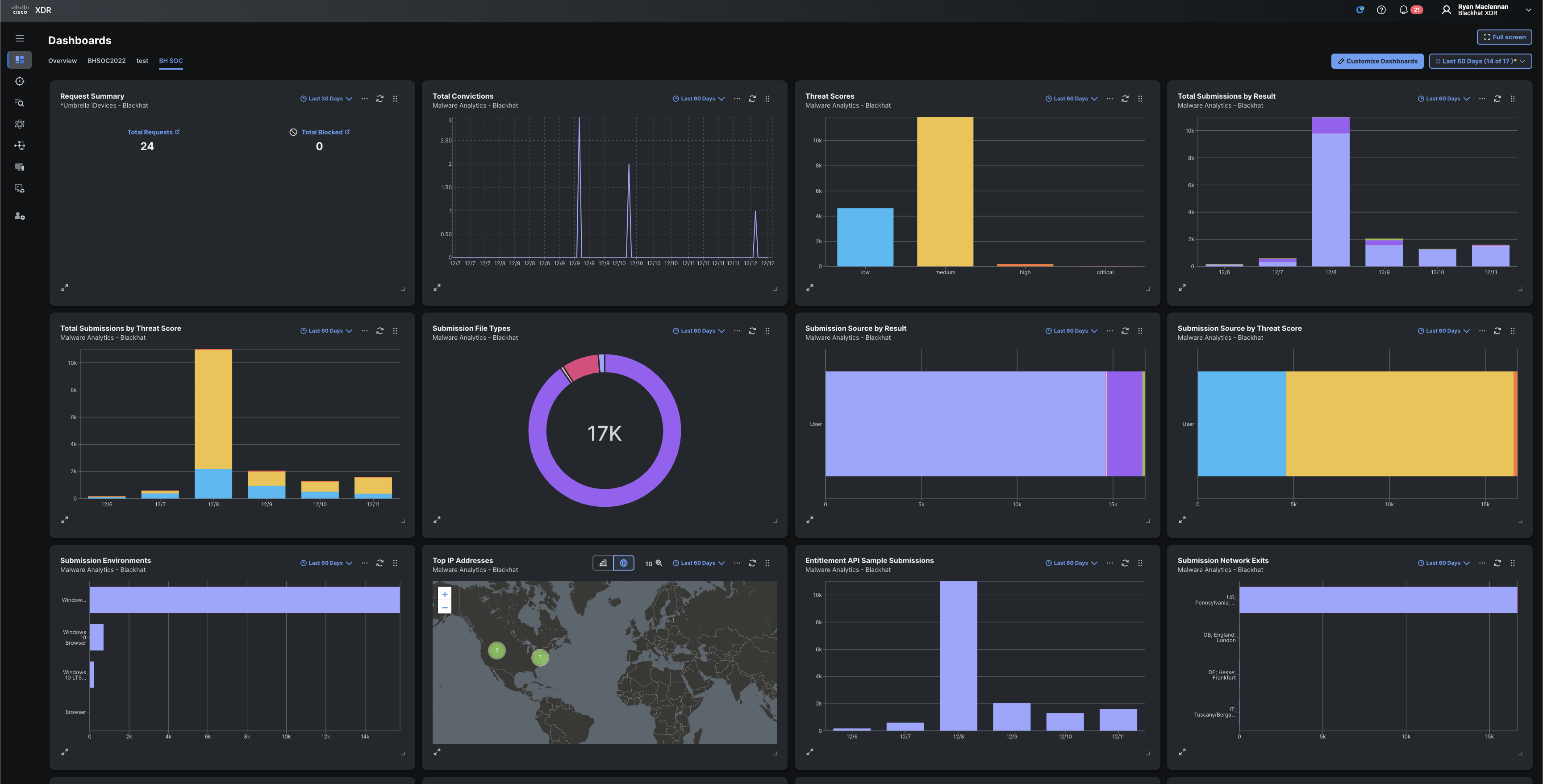
Dashboard tiles are a way to show your products data in a centralized dashboard. It can be used to display data in a variety of ways, like:
- Donut Charts
- Bar Charts
- Numbers
- Stacked Charts
- Geographic Maps
- Line Charts
Who Should Contribute
If your product has RESTful APIs, then you can make dashboard tiles and get your data displayed here.
Integration Types
There are multiple tile types and we will go over those in the development section.
Investigate (Enrichment)
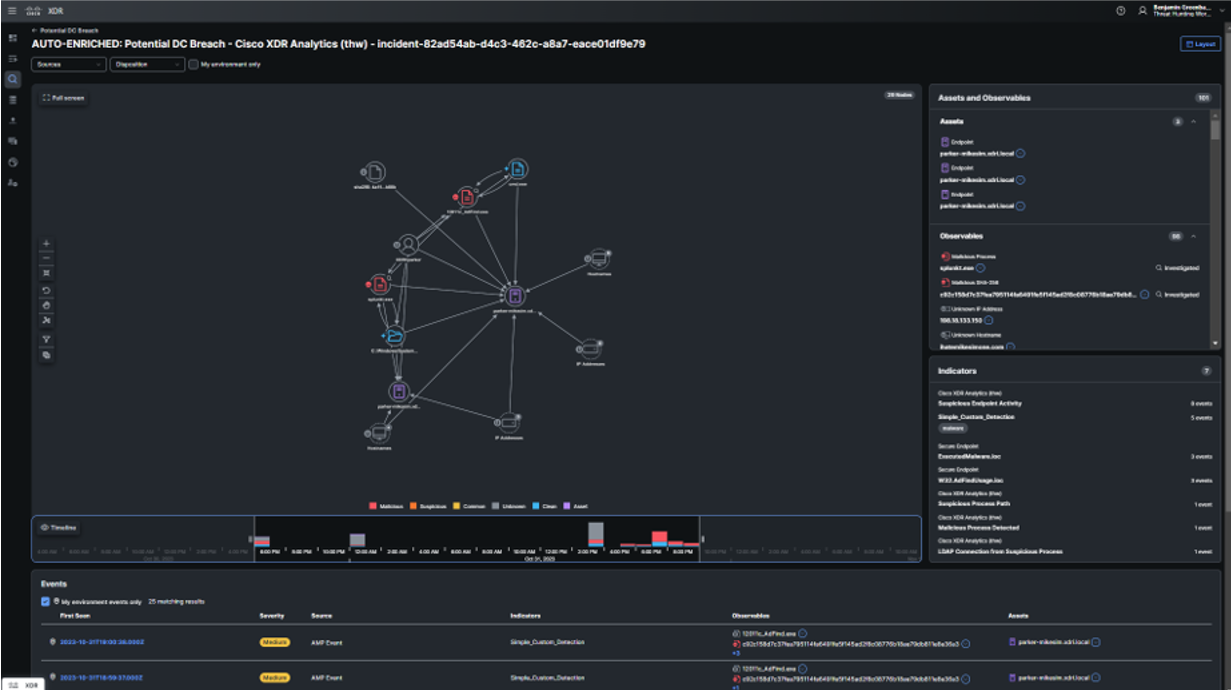
Investigations in XDR is how we combine threat intelligence, security detections, and response into a single command center. This data is combined and then shown to users to that they can be proactive and make better informed decisions when stopping threats and reducing dwell time.
Within an investigation, we correlate observables from the integrated products and then provide this information within the UI along with actions that can be taken on these observables (if there is an aciton that can be taken).
Observables can be identified system or network artifacts such as:
- IP addresses
- Domain names
- Files hashes
- User Names
- Processes
- Email addresses
- MAC Addresses
- User Agents
- Many More
Who Should Contribute
If your product can provide at least one of the below, then it is a good candidate to integrate with XDR.
- Reputational information or threat intelligence about an observable (Deliberation)
- Display information about an observable at a unique URL within your product's UI (Referral)
- Provide records (logs) about observables (Sightings)
- Provide response capabilities based on the type of observable (Response)
Integration Types
Deliberation
Deliberating an observable in XDR includes querying your product API about a specific observable and getting back a verdict. The verdict can be unknown, suspicious, malicious, clean, and some others.
Sightings
Sightings are the logs from your product(s) that can be provided to XDR as additional information or indications within an XDR investigation.
Referral
Referrals are useful to customers because it allows them to pivot out of Cisco XDR and into your product's UI using a unique URL that your products provides. This is usually done as a way for customers to get additional information about an observable that we cannot display within XDR, but your product does provide.
Response
Response actions are options you can provide to do "something" with an observable. This something can be to quarantine an observable, block it, or anything else your product is able to provide as an action on that observable.
Incidents
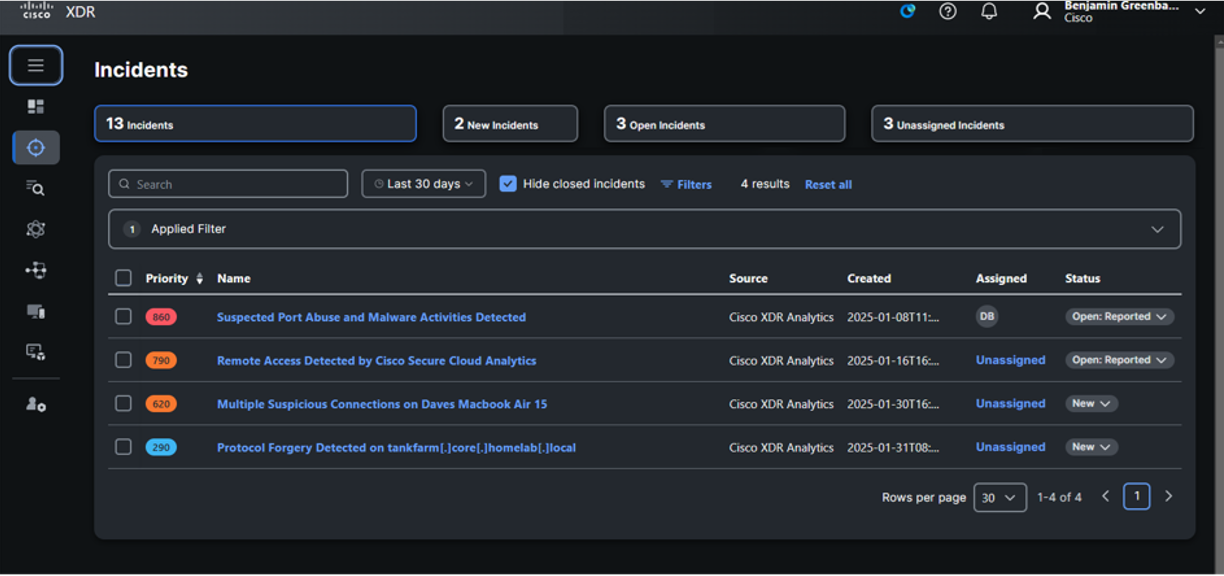
Incidents in XDR are the culmination of data from all the products integrated into XDR that provide data to the Data Analytics Platform (DAP). The DAP takes in data from these products, analyzes it for statistics, deviations, threat patterns, and more. Then the analysis can create an incident with supporting evidence from the integrated products.
Who Should Contribute
If your products can contribute telemetry or security detections, then an integration here would be a great value to your customers.
Integration Types
Correlation
Incident correlation integrates directly into our Data Analytics Platform and can only be developed by Cisco. To make this integration with us, we would need your cooperation and readiness to provide technical assistance during the development process. However, injecting incidents into XDR does not require Cisco to develop an integration.
Injection
Injected incidents are incidents that are added to the XDR incidents queue via API. This bypasses the analytics you get with the DAP but is a way to centralize incidents and create investigations from them.
Automate
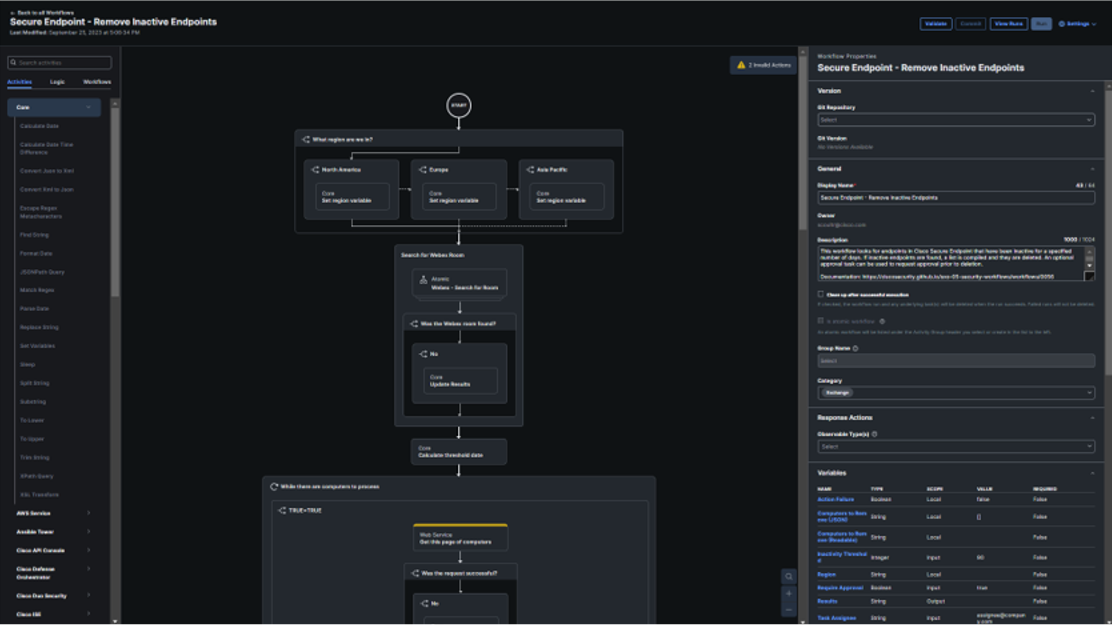
XDR Automate is a low code/no code framework to create automation "workflows". These workflows can be used to automate security processes like:
- threat investigation
- threat hunting
- remediation actions
The workflows can be used for any other number of processes. As an example, it could be used to invite users to different products if they are new or parse CSV files and export it in a format you need.
Who Should Contribute
If your product has RESTful APIs, then it can be used in XDR Automate. This will allow your customers to be able to use your product in a rapid and efficient manner.
Integration Types
Workflows
Developing a workflow is as easy as loading up the Automation page and creating a new workflow. Drag and drop what functions you need to use and get started.
Actions
Actions are workflows that do a single thing and have been converted into an "Atomic". An atomic is a building block that can be used in a workflow.
Assets
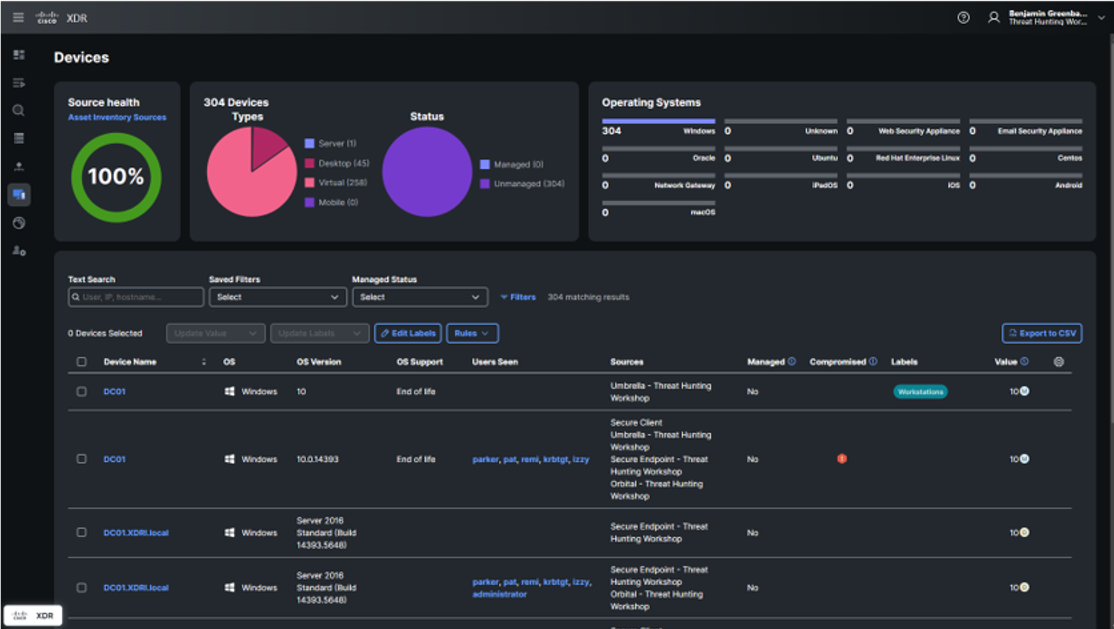
Asset Insights is a one stop shop for all information around an environment’s assets. This information can be used around understanding the security landscape and business risk of incidents that occur involving these assets.
Who Should Contribute
If your product collects or discovers asset information or intelligence, such as:
- System Name
- User Relationships
- Patch Version
- Agent State
- Network Addresses
- Many more
Integration Types
Retrieval
Once the Assets API is available, it can be used to pull information around assets and be used in your products services or to enhance funcitons of your product.
Import
Using the XDR CSV upload, you can import assets into XDR and XDR can use these assets in investigations and incidents to determine risk and severity of an incident. Once the Assets API is available, this can be a much more automated process.